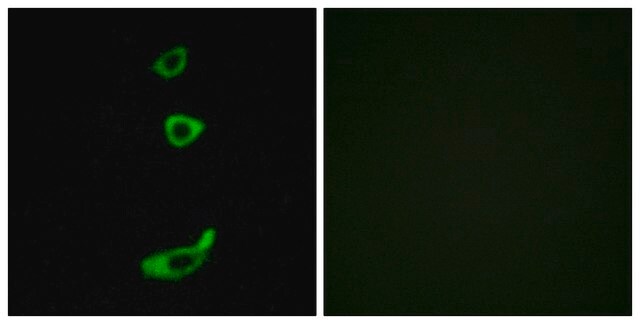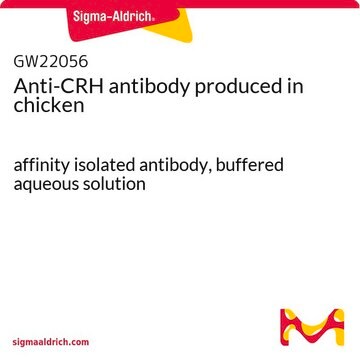C5348
Anti-Corticotropin Releasing Factor antibody produced in rabbit
IgG fraction of antiserum, buffered aqueous solution
Sinónimos:
CRF Antibody - Anti-Corticotropin Releasing Factor antibody produced in rabbit, Crf Antibody, Anti-CRF
About This Item
Productos recomendados
origen biológico
rabbit
conjugado
unconjugated
forma del anticuerpo
IgG fraction of antiserum
tipo de anticuerpo
primary antibodies
clon
polyclonal
formulario
buffered aqueous solution
reactividad de especies
frog, canine, sheep, rat, human, mouse, pig, bovine
técnicas
immunohistochemistry (formalin-fixed, paraffin-embedded sections): 1:100 using microwave-treated sections of human placental tissue
microarray: suitable
radioimmunoassay: 1:10,000 using 2-125I-His12-CRF, human
Nº de acceso UniProt
Condiciones de envío
dry ice
temp. de almacenamiento
−20°C
modificación del objetivo postraduccional
unmodified
Información sobre el gen
human ... CRH(1392)
mouse ... Crh(12918)
rat ... Crh(81648)
Categorías relacionadas
Descripción general
Especificidad
Inmunógeno
Aplicación
Acciones bioquímicas o fisiológicas
Forma física
Almacenamiento y estabilidad
Cláusula de descargo de responsabilidad
Not finding the right product?
Try our Herramienta de selección de productos.
Código de clase de almacenamiento
10 - Combustible liquids
Clase de riesgo para el agua (WGK)
nwg
Punto de inflamabilidad (°F)
Not applicable
Punto de inflamabilidad (°C)
Not applicable
Certificados de análisis (COA)
Busque Certificados de análisis (COA) introduciendo el número de lote del producto. Los números de lote se encuentran en la etiqueta del producto después de las palabras «Lot» o «Batch»
¿Ya tiene este producto?
Encuentre la documentación para los productos que ha comprado recientemente en la Biblioteca de documentos.
Nuestro equipo de científicos tiene experiencia en todas las áreas de investigación: Ciencias de la vida, Ciencia de los materiales, Síntesis química, Cromatografía, Analítica y muchas otras.
Póngase en contacto con el Servicio técnico





